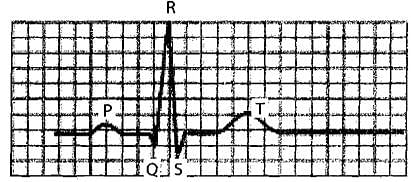Test: Electrocardiograph (ECG) (August 19) - NEET MCQ
10 Questions MCQ Test Daily Test for NEET Preparation - Test: Electrocardiograph (ECG) (August 19)
In a standard ECG which one of the following alphabets is the correct representation of the respective activity of the human heart?
Read the following statements and select the correct option
Statement 1: The 4-chambered heart of Birds is superior to the 4-chambered heart of Crocodiles.
Statement 2: Crocodilian heart retains both systemic arches that join, causing the mixing of blood in the dorsal aorta while the avian heart has lost the left systemic arch.
Statement 1: The 4-chambered heart of Birds is superior to the 4-chambered heart of Crocodiles.
Statement 2: Crocodilian heart retains both systemic arches that join, causing the mixing of blood in the dorsal aorta while the avian heart has lost the left systemic arch.
| 1 Crore+ students have signed up on EduRev. Have you? Download the App |
In the given figure of the heart which of the labelled part (1,2,3,4,5) carries oxygenated blood?


Which of the following sequences is truly a systemic circulation pathway?
What is the nature of blood passing through blood vessels A, B, C and D respectively?

Which of the following statements is correct?
Choose the schematic diagram which properly respresents pulmonary circulation in humans.
Which of the following is the diagrammatic representation of standard electrocardiogram(ECG)?
The given figure is the ECG of a normal human. Which one of its components is correctly interpreted below

|
12 docs|366 tests
|

















